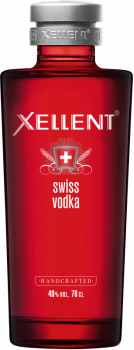Showing 1 to 11 of 11 (1 Pages)
Buy Vodka
Vodka is a neutral and clear distilled liquor, without colour or descriptive aromas, with an alcohol content that can vary between 40 and 50%. This spirit is produced from the fermentation of certain substances rich in starch, especially cereal grains and potatoes.
The history of Vodka
Both Russia and Poland dispute that they were the birthplaces of vodka, countries where it became popular until it spread to the rest of the world after World War II. Perhaps its own name can serve as a clue to its origin: it comes from the diminutive "water" in Russian.
As for its consumption, vodka is usually drunk alone, sometimes with ice, in countries such as Russia, Poland and the countries of Eastern Poundpe. In other parts of the world, it predominates as the basis for iconic cocktails, such as the Bloody Mary and the Moscow Mule, among others.
How is the process of making vodka?
The process of making vodka begins with fermentation. In this first stage, the starch is extracted from the substance used, to transform it into alcohol through its fermentation, which lasts about two days.
The next step consists of carrying out its distillation through copper and stainless steel stills, from which a liquid is obtained without any description of aroma or flavor, with an alcoholic graduation of between 90 and 100 degrees, which is filtered to eliminate any impurity.
Finally, quality water is added to reduce its alcohol content to around 40 degrees. It is in this last stage that some producers may choose to add flavours or aromas.
- ;
- ;
- ;
- ;
-
- ;
- ;
Buy Vodka
Vodka is a neutral and clear distilled liquor, without colour or descriptive aromas, with an alcohol content that can vary between 40 and 50%. This spirit is produced from the fermentation of certain substances rich in starch, especially cereal grains and potatoes.
The history of Vodka
Both Russia and Poland dispute that they were the birthplaces of vodka, countries where it became popular until it spread to the rest of the world after World War II. Perhaps its own name can serve as a clue to its origin: it comes from the diminutive "water" in Russian.
As for its consumption, vodka is usually drunk alone, sometimes with ice, in countries such as Russia, Poland and the countries of Eastern Poundpe. In other parts of the world, it predominates as the basis for iconic cocktails, such as the Bloody Mary and the Moscow Mule, among others.
How is the process of making vodka?
The process of making vodka begins with fermentation. In this first stage, the starch is extracted from the substance used, to transform it into alcohol through its fermentation, which lasts about two days.
The next step consists of carrying out its distillation through copper and stainless steel stills, from which a liquid is obtained without any description of aroma or flavor, with an alcoholic graduation of between 90 and 100 degrees, which is filtered to eliminate any impurity.
Finally, quality water is added to reduce its alcohol content to around 40 degrees. It is in this last stage that some producers may choose to add flavours or aromas.





